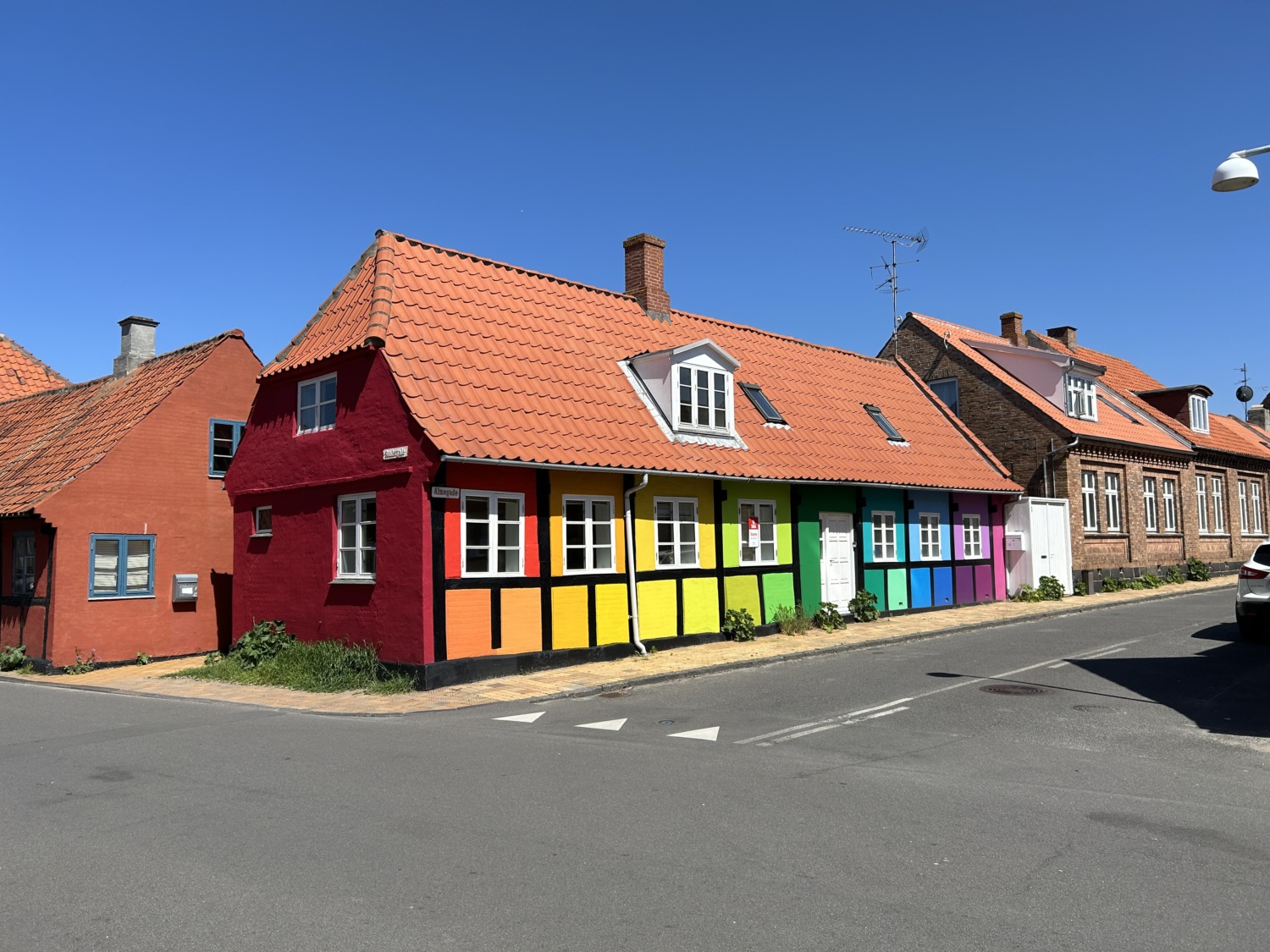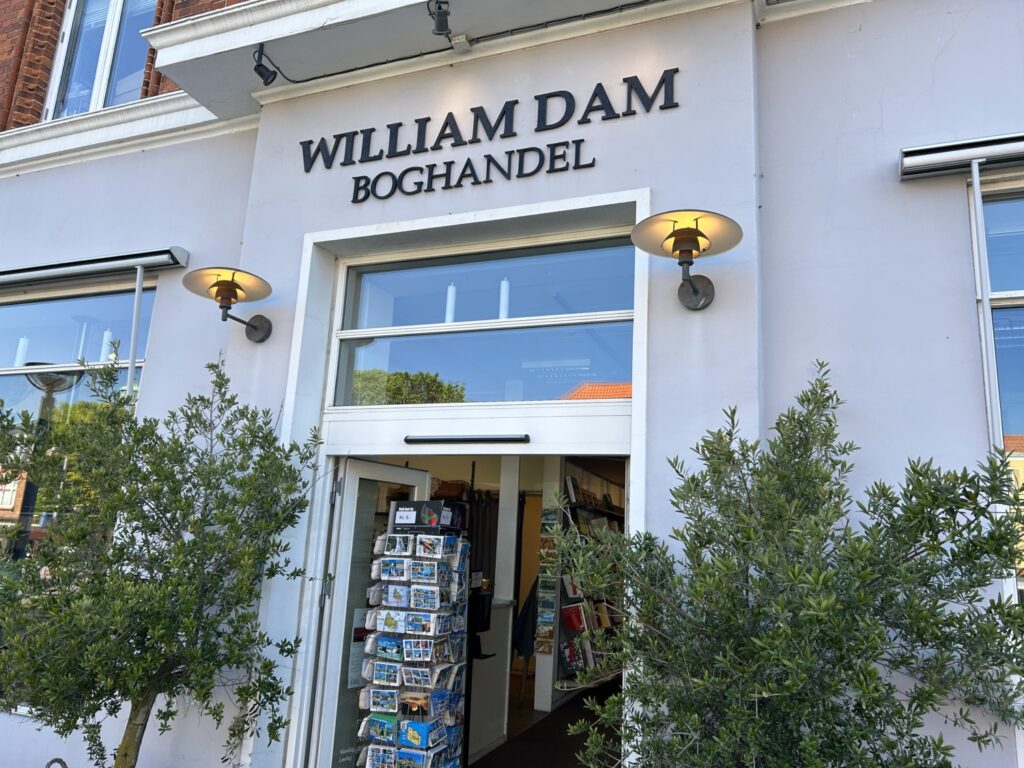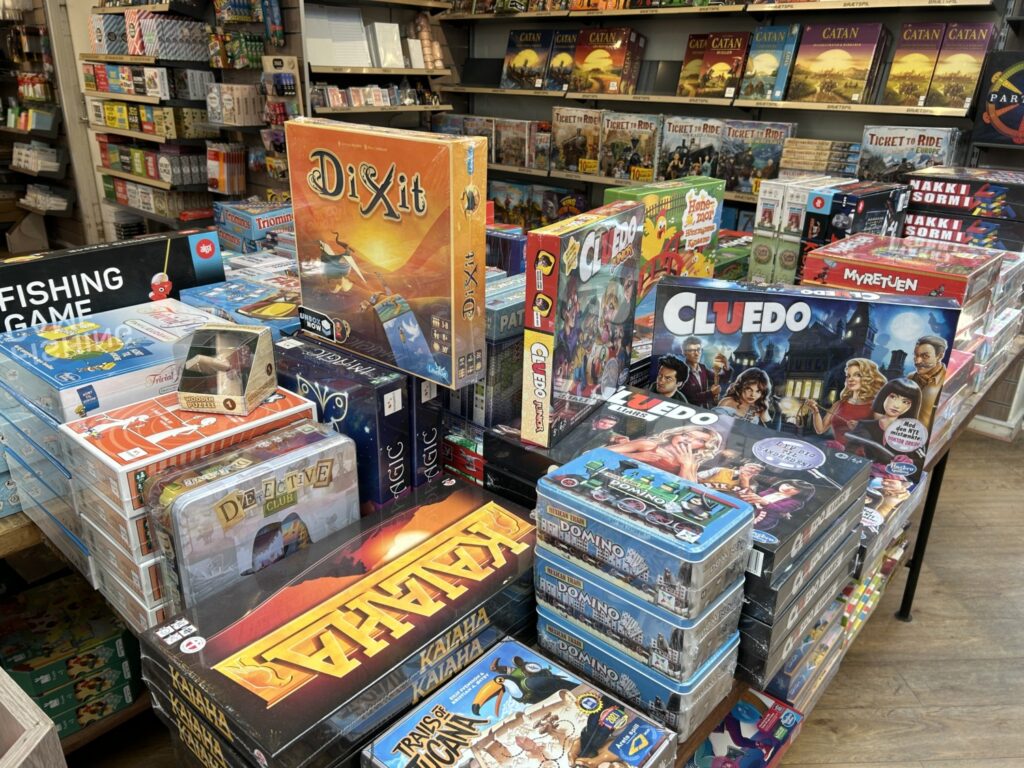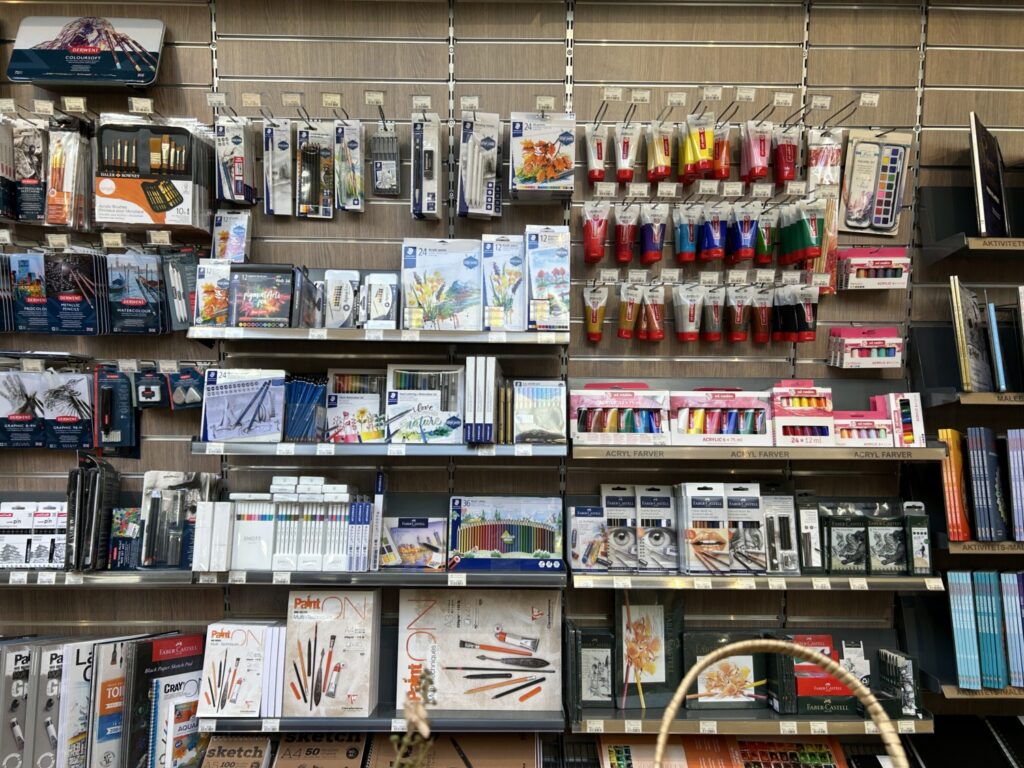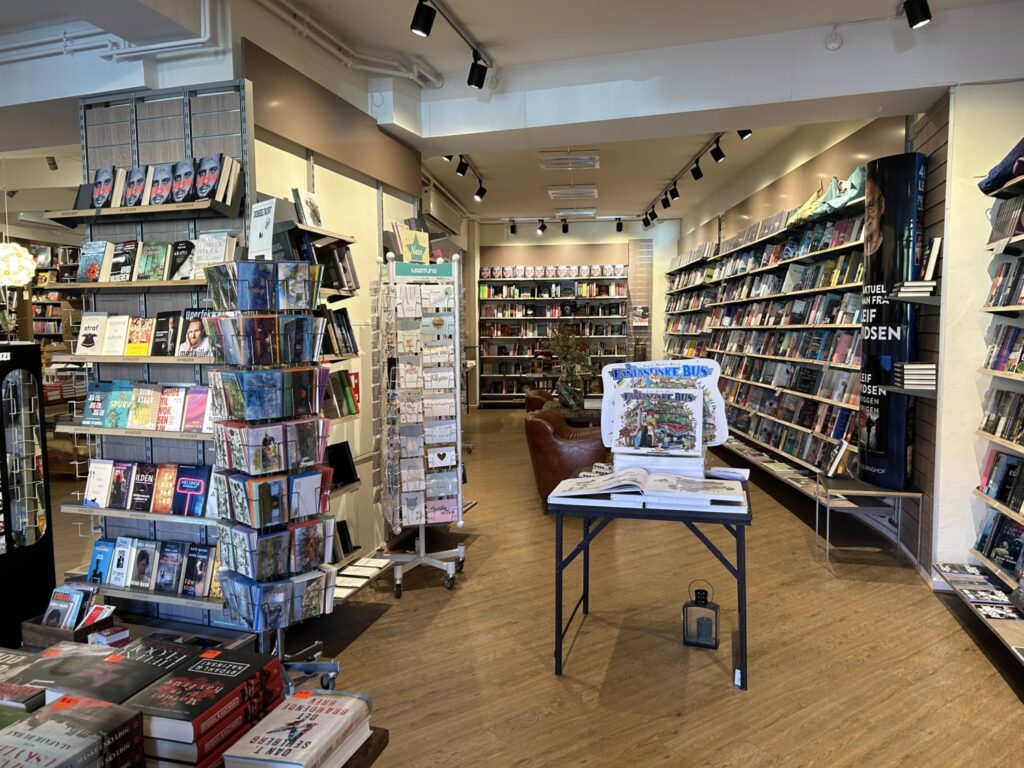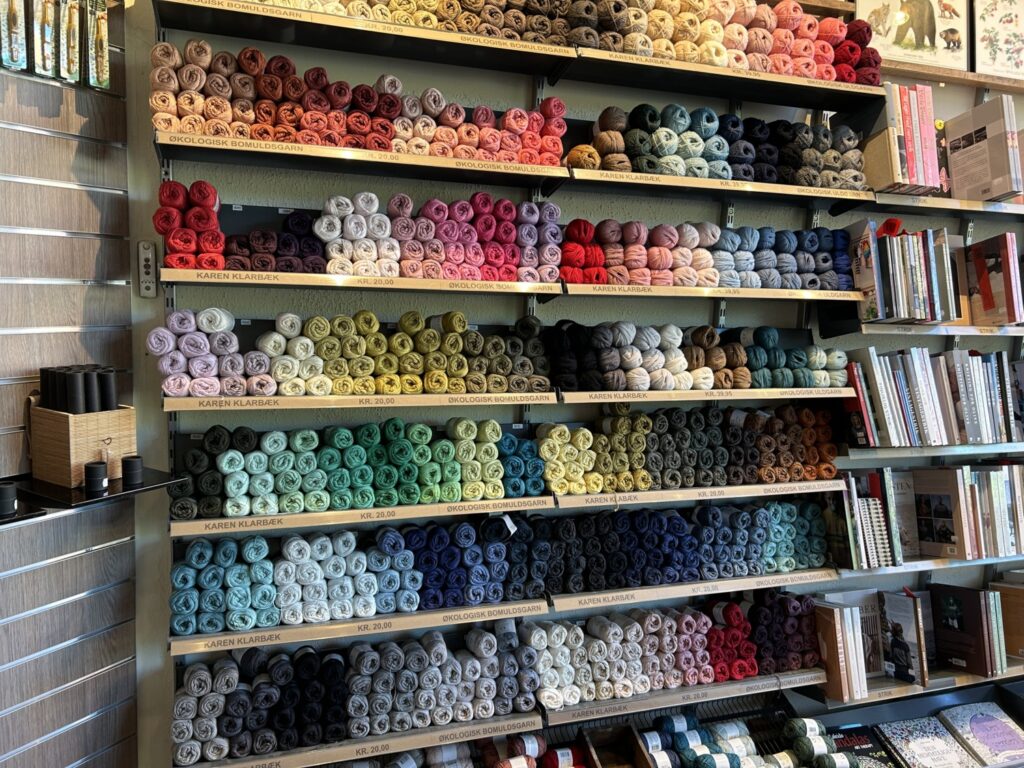One of our cruise stops was Rønne, Denmark. We had planned to ride bikes around Bornholm, but changed that shore excursion to a walk around Rønne. The Scandinavian capitals are huge on biking and there are plenty of bike trails in the countryside, but riding in the smaller towns with their cobblestone streets can be tricky. We decided it would be better to walk around instead.
Rønne is a small city of 14,000 people. Although we were met at the pier by an accordian band, Rønne is not a tourist town and is not set up to welcome lots of tourists. Understandable, when you know the history of the island. Bornholm has constantly been overrun and occupied by other countries. Rønne was established as a market town in Denmark in 1275, when the Church of St. Nicolas was built.

Men from Lübeck, Germany, took over the island in 1525 for debts owed by the Danish king. Control returned to the Danish when the people of the island drove out the Germans in 1576. Then Denmark ceded control of Bornholm to the Swedish in 1658. The people of the island drove out the Swedes the next year.
During World War II, the island was occupied by the Germans. At the end of the war, the German commander refused to surrender to the Russians – he wanted to surrender to other Allied forces – and Rønne was bombed by the Russians. Many homes were destroyed but few people killed. The Germans surrendered and the island was occupied by the Russians for one year. Then the people of Bornholm drove the Russians out and the island returned to Denmark.
Given this interesting history, Tom and I decided to take the guided walk through Rønne. Unfortunately, our walk didn’t start until 1 p.m. We weren’t going to stay on the ship all morning, so we got off the ship and explored the town on our own. There was a free shuttle into town and we caught that and explored the small city.
The town has the usual European charm, although it isn’t particularly old or significant. It is not a UNESCO World Heritage Site or a member of the Hanseatic League. Although the Church of St. Nicolas was originally built in 1275, I don’t think any of the current building was original. It was still interesting, but it had lots of modern touches. The altarpiece of the church is a modern painting of Jesus calming the storm. It is always interesting to see how a modern congregation worships in an old, historic building.
We walked along all kinds of twisting, narrow roads. Tom kept us on track to reach the Store Torv, the town square. The only concession to tourism that we could find was the Shopper’s Guide map that had all the stores listed on it. I was looking for a demitasse spoon, so we tried to find a souvenir shop. Even though there were several places listed under that category on the map, the only souvenirs they had were postcards.
We did, however, find some fun and interesting shops. The yarn shop wasn’t open until noon, which was too late for us. But next to it was William Dam Boghandel, was an odd conglomeration of Joann’s, Homegoods, and Barnes and Noble. It had postcards, books, art supplies, a wall of yarn, towels and kitchen items, and computer toner. And a great selection of games. Tom and I are always looking for a fun game to play, but the instructions for all of these games were in Danish. That makes it more challenging to learn.
Another store we really liked was KonditorBager. It was a pastry shop where everything looked delicious. Tom kept insisting he had just had breakfast and wasn’t hungry, but I wasn’t going to pass up the chance to buy some of their delicious-looking goodies. We decided to get some Smorkagestykke, Danish Butter Cake. I got the vanilla frosted one, and Tom got the chocolate frosted one. We sat by the fountain and I ate mine immediately. Tom showed more restraint and had his for lunch. So good! It was soft pastry with an apple filling.
After eating the smokagestykke, we had to walk around some more to work off the calories. We checked out the grocery store Meny, then went into a small shopping mall with a fun toy store. We spent a lot of time looking at the Legos but decided we should order them online when we get home instead of schlepping them all over Europe. I was interested in finding a Barbie whose packaging was in Danish, but they were all the regular American dolls.

Having explored as much of Rønne as possible before our tour, we headed back to the ship. After a quick, light lunch, we met our tour guide, Kai, for our walking tour of Rønne. Kai was not the most inspiring tour guide leader. He told us that he had to translate everything from German (his native language) to Danish to English. His narrative was a little slow as a result. And the tour felt like it lasted forever. We did see some of the older parts of town, but enjoyed our morning much more than our afternoon.
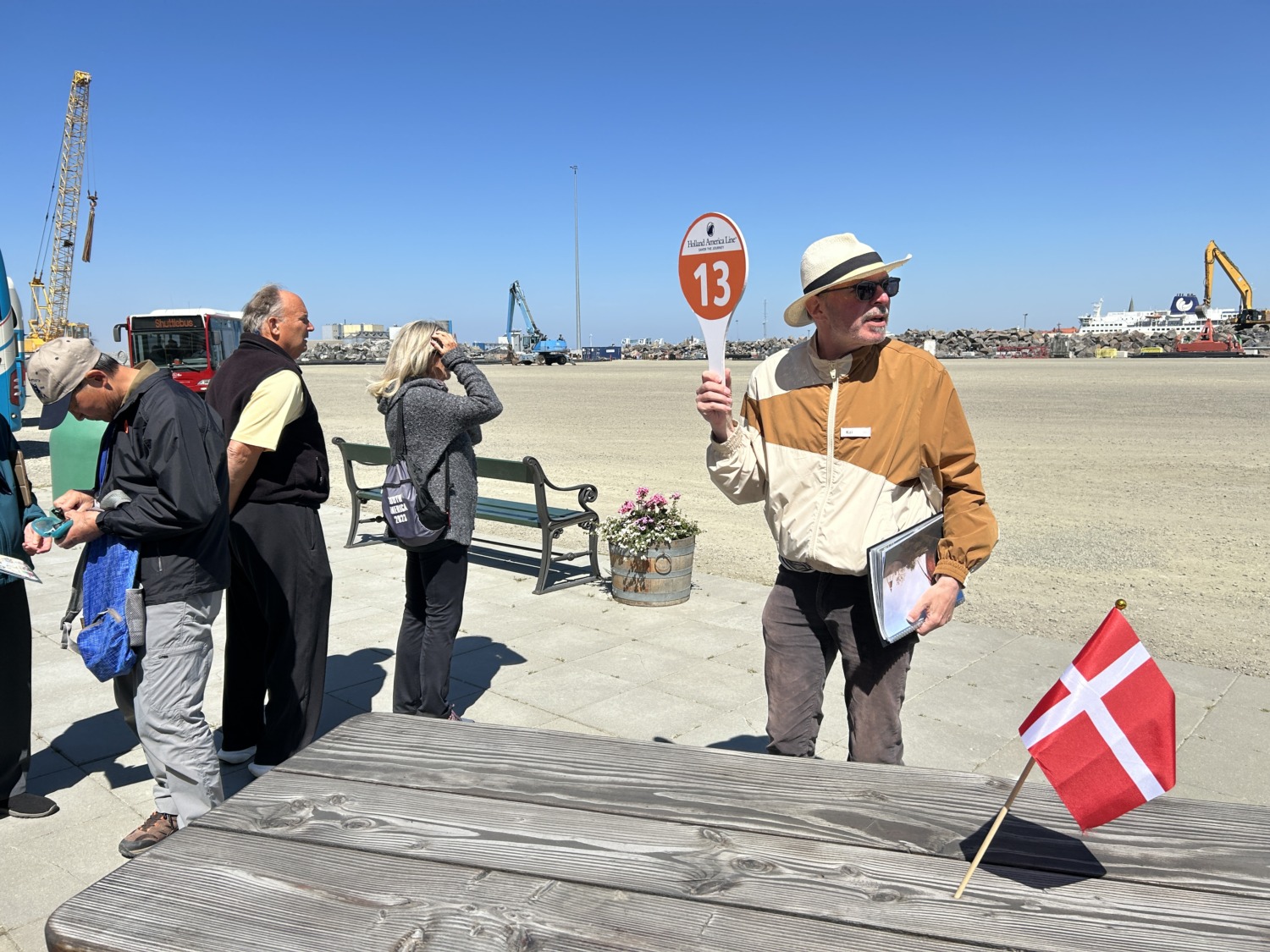
Rønne was an interesting port to visit. It was less awe-inspiring than many other places, but felt more real and lived-in. It felt like a place you could live and not just visit.



